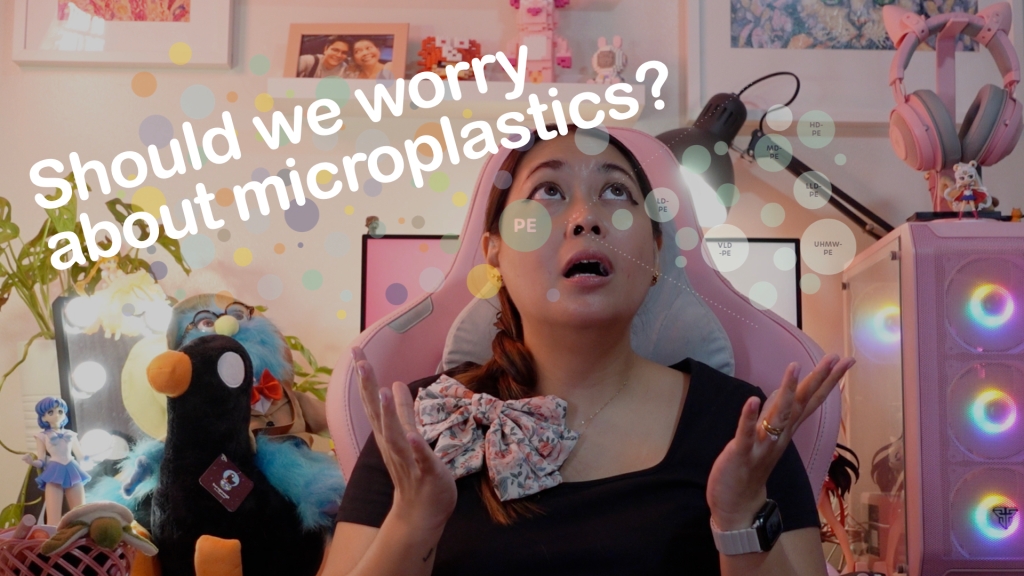Hello Science Fans!
I think we all can agree why single use plastic is bad for the environment, right?
Plastics take centuries to decompose, leading to long-term pollution. They disrupt natural habitats, harming plants and animals. In fact, many animals mistake plastic for food, causing physical harm and death. Wildlife can also get trapped in plastic debris, leading to injuries and fatalities.
As a material, plastics absorb and release harmful chemicals, impacting ecosystems. And so governments spend a lot of resources on plastic litter removal. After all, plastic pollution can deter tourists, affecting local economies since plastic debris detracts from natural beauty and recreational areas. To top it off, plastics can release toxins that affect human health. And for localizing that try to burn plastic, incinerating plastics produces harmful air pollutants.
But plastic pollution can lead to a tiny but bigger problem: Microplastics.
Now, why should we worry about Microplastics?
Learn about the answer to this question by reading this article or check out our video below:
Before I answer this questions using science, let me first introduce myself to our new viewers.
I’m Chona and I’m your resident Filipina scientist.
I’m a researcher who have gone from ridge to reef and have seen how dependent we are on the environment.
I’m a teacher who teaches subjects like Ecology, Botany, Genetics, and more; and my students and I find it interesting how interconnected we are to nature.
And SHE-ensya is my science communication channel where I try to spotlight some environmental concerns that we should start acting on.
So what’s the deal with Microplastics?
Microplastics are tiny plastic particles or fragments that measure less than 5 millimeters (0.2 inches) in size. They can be further categorized into two main types: primary microplastics and secondary microplastics.
Primary Microplastics are intentionally manufactured small plastic particles used in various products. Examples include microbeads in personal care products like exfoliating scrubs and toothpaste, as well as nurdles, which are small pre-production plastic pellets used in manufacturing processes.
Secondary Microplastics, on the other hand, are created through the breakdown of larger plastic items, such as bottles, bags, and packaging materials, due to environmental factors like UV radiation, mechanical abrasion, and weathering. Secondary microplastics can result from the gradual degradation of larger plastics over time.
These tiny plastic particles can enter the environment through various ways.
For example, primary microplastics are intentionally added to products like cosmetics and cleaning agents and can be released into the environment when these products are used and washed down drains. And then larger plastic items, such as bottles and bags, can break down into smaller pieces due to exposure to sunlight (UV radiation), heat, and physical wear and tear. But activities like driving on paved roads with plastic tires or walking on synthetic surfaces can also generate microplastic particles from the friction between the plastic and the ground.
But why should we worry about Microplastics?
There’s not a lot of long term research about Microplastics just yet. So what we have are preliminary observations and projections on what they can do once they become even more prevalent in nature.
So far, we’ve seen that Microplastics can be mistaken for food by marine and terrestrial animals. Ingesting these particles can lead to physical harm, blockages in digestive systems, malnutrition, and even death. Affected animals include fish, seabirds, turtles, and various aquatic organisms. Microplastics can also accumulate in the tissues of organisms over time. As smaller animals are consumed by larger ones, microplastics can move up the food chain, potentially leading to higher concentrations of microplastics in predators.
Due to their size and chemical composition, Microplastics can disrupt ecosystems by altering nutrient cycling, affecting microbial communities, and interfering with the balance of aquatic and terrestrial ecosystems. Microplastics can also absorb and then release harmful chemicals from the environment. These chemicals can include pollutants and additives, potentially exposing organisms to toxic substances.
When it comes to human health, there is concern that microplastics could enter the human food chain through consumption of seafood and other products, potentially exposing humans to the chemicals associated with microplastics. After all, Microplastics have been found in the air, which means people may also be exposed through inhalation, although the health implications of this exposure are still being studied. The long-term ecological and health effects of microplastics are not yet fully understood. Ongoing research is examining the potential consequences of prolonged exposure to microplastics.
Scientists have found microplastics in very strange and concerning places.
For example, Microplastics have been discovered in Arctic sea ice, indicating that even remote and pristine polar regions are not immune to plastic pollution. This is alarming because the Arctic ecosystem is particularly vulnerable to environmental changes. And then Microplastics have also been found in the deep ocean, including the Mariana Trench, which is the deepest point on Earth. The presence of microplastics in these remote and largely unexplored areas raises questions about the extent of plastic pollution’s reach.
Microplastics have been detected in various seafood species that are consumed by humans, such as fish, shrimp, and mussels. In fact, my own thesis students have found them in mangrove crabs or alimango, in milkfish or bangsus, and even in tawilis. This raises concerns about potential human exposure to microplastics through the food chain and its associated health risks. I’ve also already mentioned that Microplastics have been found in urban air, including dust and particulate matter in cities. This suggests that people living in urban areas may be exposed to airborne microplastics through inhalation. And Microplastics have been detected in tap water and bottled water, raising concerns about human exposure to microplastics through drinking water sources.
And microplastics have been detected in human bodies already.
Studies have identified microplastics in the gastrointestinal (GI) tracts of humans. It’s believed that microplastics can enter the body through the consumption of contaminated food and beverages. The GI tract is one of the primary routes through which microplastics may be ingested. Interestingly, Microplastics have been detected in human feces. These findings suggest that some microplastics consumed through food and drink can pass through the GI tract and be excreted. But Microplastics have been found in various human tissues, including the liver, lungs, and lymph nodes. However, the mechanisms through which microplastics reach these tissues and the potential health implications are still subjects of ongoing research.
Scary, right? And considering microplastics seem to be everywhere, it would be difficult to avoid them. Our goal, instead, should be to try and reduce their presence in the environment.
Reducing microplastic pollution requires a multifaceted approach that involves individuals, communities, businesses, and governments.
On a personal level, we can try and minimize our use of single-use plastics like disposable cutlery, bottles, bags, and straws. We can also dispose of plastic waste responsibly by recycling and properly disposing of items in designated bins. We should also avoid littering, as plastics that end up in the environment can eventually break down into microplastics. Let’s check product labels for the presence of microplastics, especially in personal care items like scrubs and toothpaste. We have to choose products that use natural alternatives for exfoliation. When washing synthetic clothing (e.g., polyester, nylon), we should use a microfiber filter or washing bag to capture microfibers released during laundering. This prevents them from entering wastewater and ultimately the environment. We can participate in local beach and river cleanups to help remove plastics and microplastics from natural environments.
As a community, we can advocate for and support policies and regulations aimed at reducing plastic production and consumption. We have to encourage our local and national governments to implement plastic bans, fees, or other measures to limit plastic use. We need to encourage businesses and industries to adopt more sustainable practices, such as reducing plastic packaging, developing eco-friendly materials, and implementing better waste management. We also need to encourage sustainable fishing and aquaculture practices that minimize the use of plastic-based equipment, such as fishing nets and traps.
Right now, the STEM community is doing research into innovative solutions for capturing and removing microplastics from the environment, as well as developing biodegradable or alternative materials. We are also proceeding with active consultations with governments and large corporations to achieve a circular economy where products are designed to be reused, repaired, or recycled, reducing the need for new plastic production. But we need more funding and support so we can do more research into the sources, impacts, and mitigation of microplastics that can help us better understand and address the issue.
But what do you think?
Is it too early to worry about microplastics? What kinds of actions do you think we can do to help solve this problem? Let us know your thoughts in the comments section below.
Thank you so much for dropping by!
If you have any comments, questions or suggestions, please don’t hesitate to contact me, your resident Filipina scientist, in the comments section below.
And remember, when in doubt, always use your (con)science!

